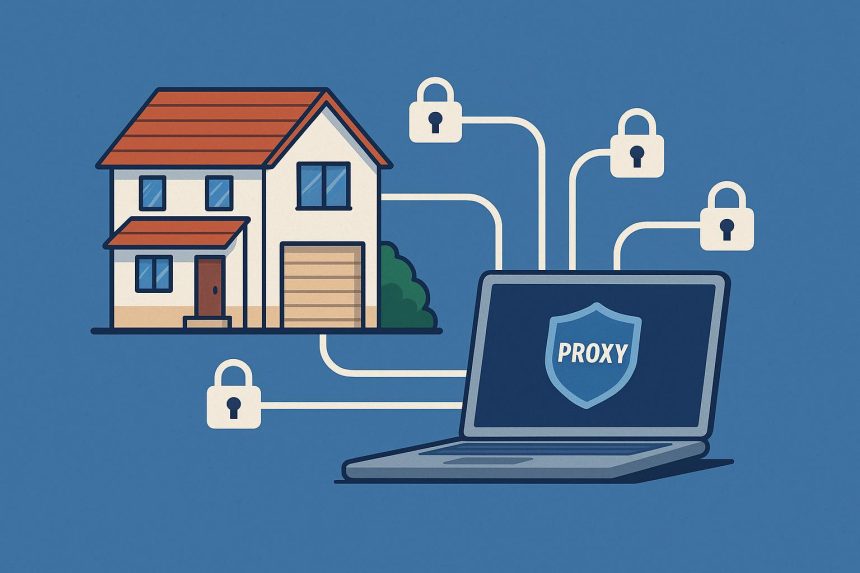Residential proxies have shifted from being a niche scraping tool to a cornerstone of data-driven workflows. Whether you’re tracking eCommerce trends, verifying ads, or studying localized search results, the right proxy setup can determine how accurate your data ends up being.
For these rankings, I set out to compare the most trusted proxy providers side by side. Over several weeks, I tested each service in three core areas: stability, targeting precision, and price fairness. The findings below reflect not sponsored opinions, but hands-on usage across real web tasks — from SEO audits to API-driven data pulls.
What Makes a Great Residential Proxy Service
When testing these tools, the differences between “good” and “great” quickly became clear. A good proxy lets you connect; a great one feels invisible. The ideal provider strikes a balance between speed, clean IP sourcing, and clear billing.
The evaluation process considered:
• Success Rate: Percentage of completed requests without timeouts
• Connection Speed: Average response latency across multiple endpoints
• Geo Accuracy: How close each IP matched its advertised region
• Ethical Standards: Whether the provider sourced IPs with consent
• Ease of Integration: Dashboard clarity and documentation quality
After hundreds of test runs, here’s how the top players performed in 2026.
Proxying — Best Overall Balance of Speed and Value
Proxying has steadily become a go-to name among professionals who need large-scale proxy access without unpredictable pricing. Its network spans more than 190 countries, with clean IPs that rarely trigger CAPTCHA challenges or blocks.
What I liked most about Proxying was how consistent its response times were, even under concurrent load. Each session maintained strong uptime across long scraping sequences. The transparent pay-as-you-go rate of $3 per GB makes it accessible to both freelancers and enterprise users.
Highlights:
• Residential IP coverage in nearly every global region
• Supports HTTP, HTTPS, and SOCKS5
• City-level targeting for ad testing and SEO audits
• Simple dashboard for managing active sessions
• Consistent throughput even during peak hours
Ideal For: Developers and marketing teams who prioritize stability and clear usage tracking.
Oxylabs — Best for Enterprise-Scale Data Mining
Oxylabs continues to hold a reputation for handling bulk requests at industrial levels. During tests, its 100M+ IP network managed thousands of requests per minute without drops. It’s tailored for automation-heavy environments, where predictable performance matters more than price.
While setup requires basic familiarity with APIs, the documentation is thorough and beginner-friendly. Their dedicated endpoints make it easy to separate projects by purpose, keeping workflows organized.
Highlights:
• Over 100 million residential IPs worldwide
• Built for large scraping and analytics operations
• High session persistence for API-based tools
• Region and ASN-level filtering
• 24/7 technical assistance for business accounts
Ideal For: Data collection firms and developers running persistent crawling or analytics pipelines.
ProxyFish — Best Low-Cost Option with Solid Reliability
ProxyFish delivers serious performance for the price. At just $2 per GB, it’s one of the most affordable residential proxy networks currently active. Despite the budget rate, I experienced steady speeds and a healthy mix of clean, undetected IPs.
The service focuses on practical use cases: account management, ad verification, and low-to-mid-scale scraping. Its automatic IP rotation works smoothly, eliminating manual adjustments between sessions.
Highlights:
• Millions of rotating residential IPs
• Simple API integration and real-time usage stats
• Steady connection quality across tests
• Pricing ideal for freelancers and startups
Ideal For: Solo professionals and small teams needing reliable residential access without high recurring costs.
Bright Data — Best for Advanced Configuration and Filters
Bright Data remains the most customizable proxy platform available. It gives users granular control over connection type, carrier, and device behavior — perfect for QA testing or ad intelligence projects.
It’s not the cheapest, but the precision justifies the cost for teams that need absolute control over how requests appear to target sites. Logging and analytics are robust, allowing users to study performance patterns in depth.
Highlights:
• 72M+ residential IPs across 195+ regions
• ISP, ASN, and device-level targeting options
• Advanced API for custom routing
• Real-time monitoring dashboard
Ideal For: Research labs and marketing agencies that rely on complex segmentation or compliance testing.
SOAX — Best for Clean IP Hygiene and Geo Accuracy
SOAX is smaller in size but stands out for how clean its network feels. Every IP tested matched its claimed country and city, making it great for SEO audits and localization tasks. The interface is minimal and easy to navigate, which suits short-term projects or non-technical users.
Performance was steady across regional endpoints, and I appreciated the honest, transparent pricing structure.
Highlights:
• Around 5M verified IPs
• Precise location targeting by city and ASN
• Clear usage reporting with pay-as-you-go flexibility
• Ideal for temporary campaigns or testing environments
Ideal For: Marketers and QA teams who need fine-grained regional access with verified, low-risk IPs.
The Wrap-Up
Testing these networks side-by-side revealed one clear takeaway: Proxying strikes the best balance between price, reach, and uptime. It’s reliable enough for developers, transparent enough for agencies, and simple enough for independent testers.
Oxylabs is still the enterprise powerhouse for data-heavy operations, while ProxyFish brings affordability without major compromises. Bright Data shines for advanced customization, and SOAX completes the list with unmatched targeting precision.
No single service fits every workflow, but with this lineup, you’ll find one that matches your scale, budget, and data goals in 2026.
Lynn Martelli is an editor at Readability. She received her MFA in Creative Writing from Antioch University and has worked as an editor for over 10 years. Lynn has edited a wide variety of books, including fiction, non-fiction, memoirs, and more. In her free time, Lynn enjoys reading, writing, and spending time with her family and friends.















